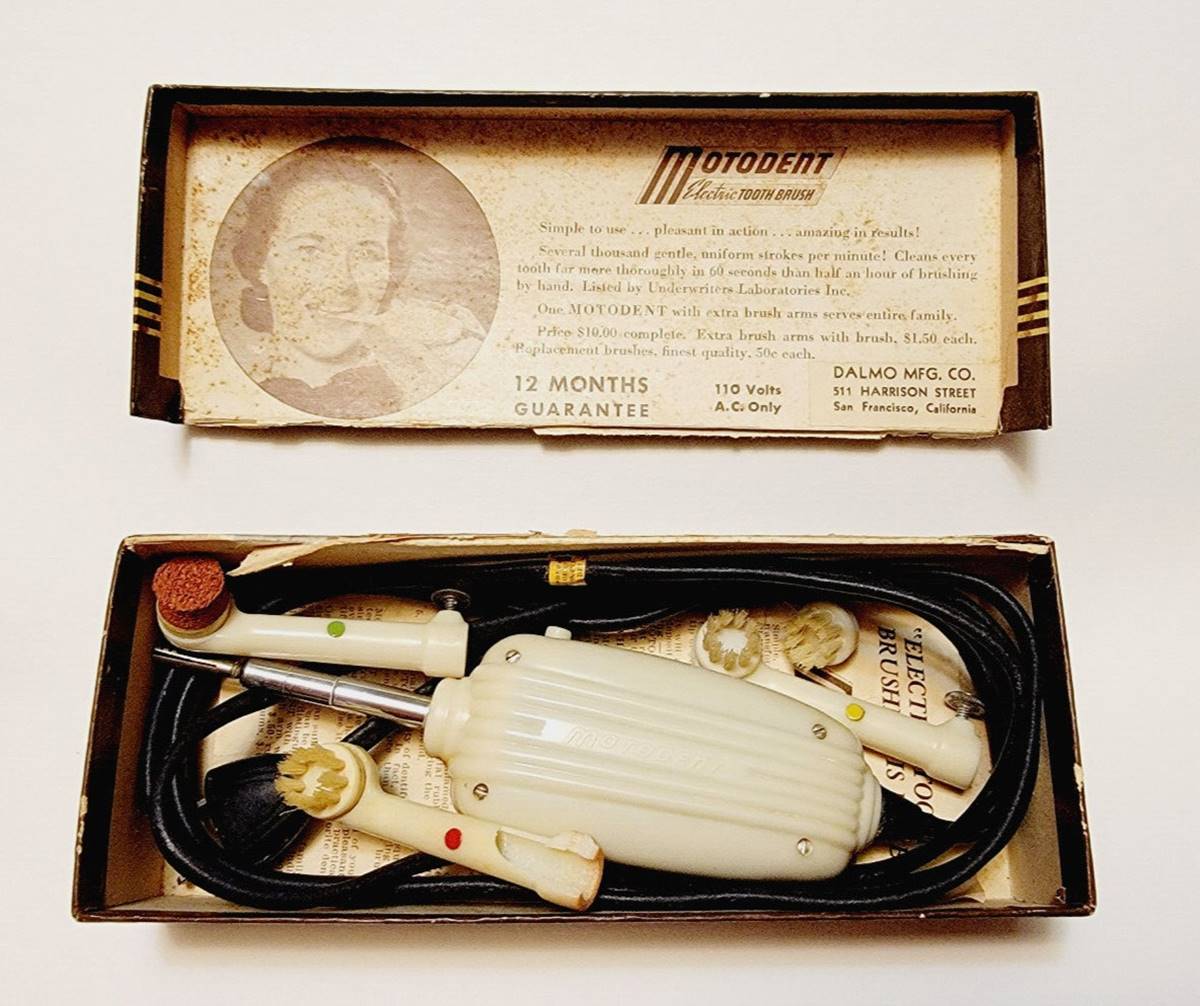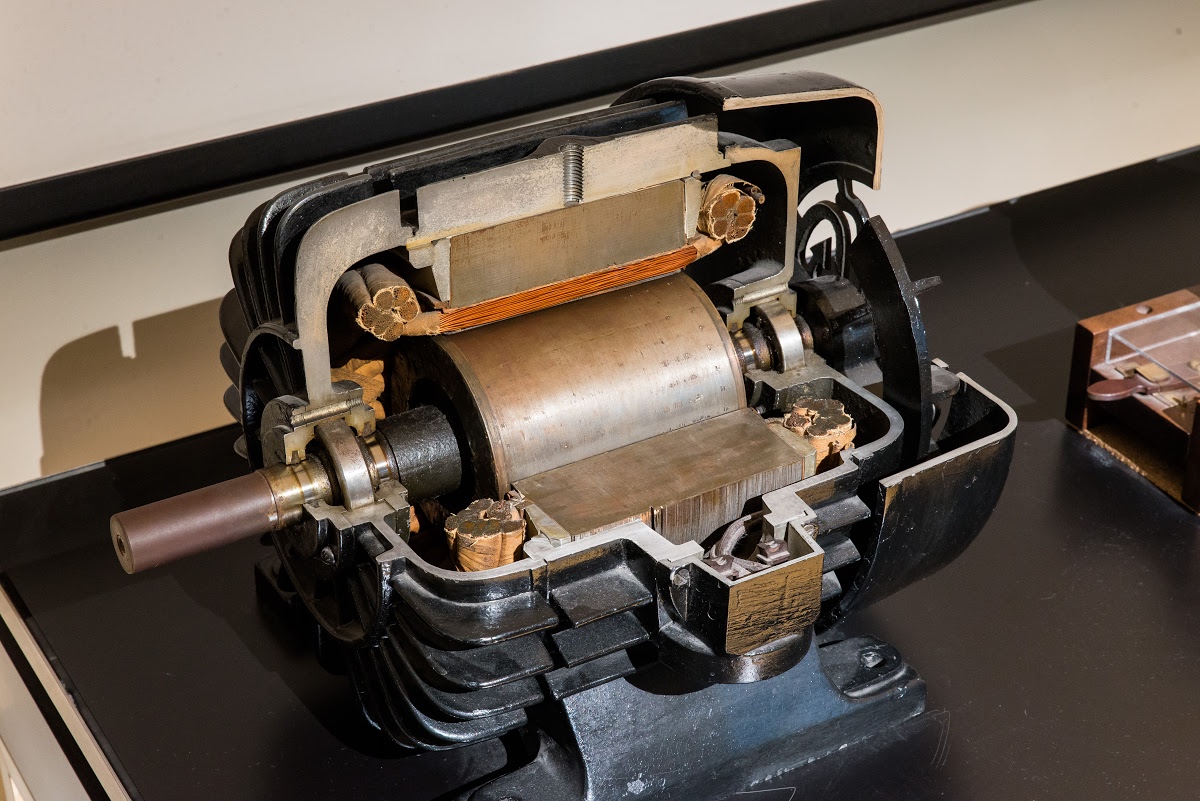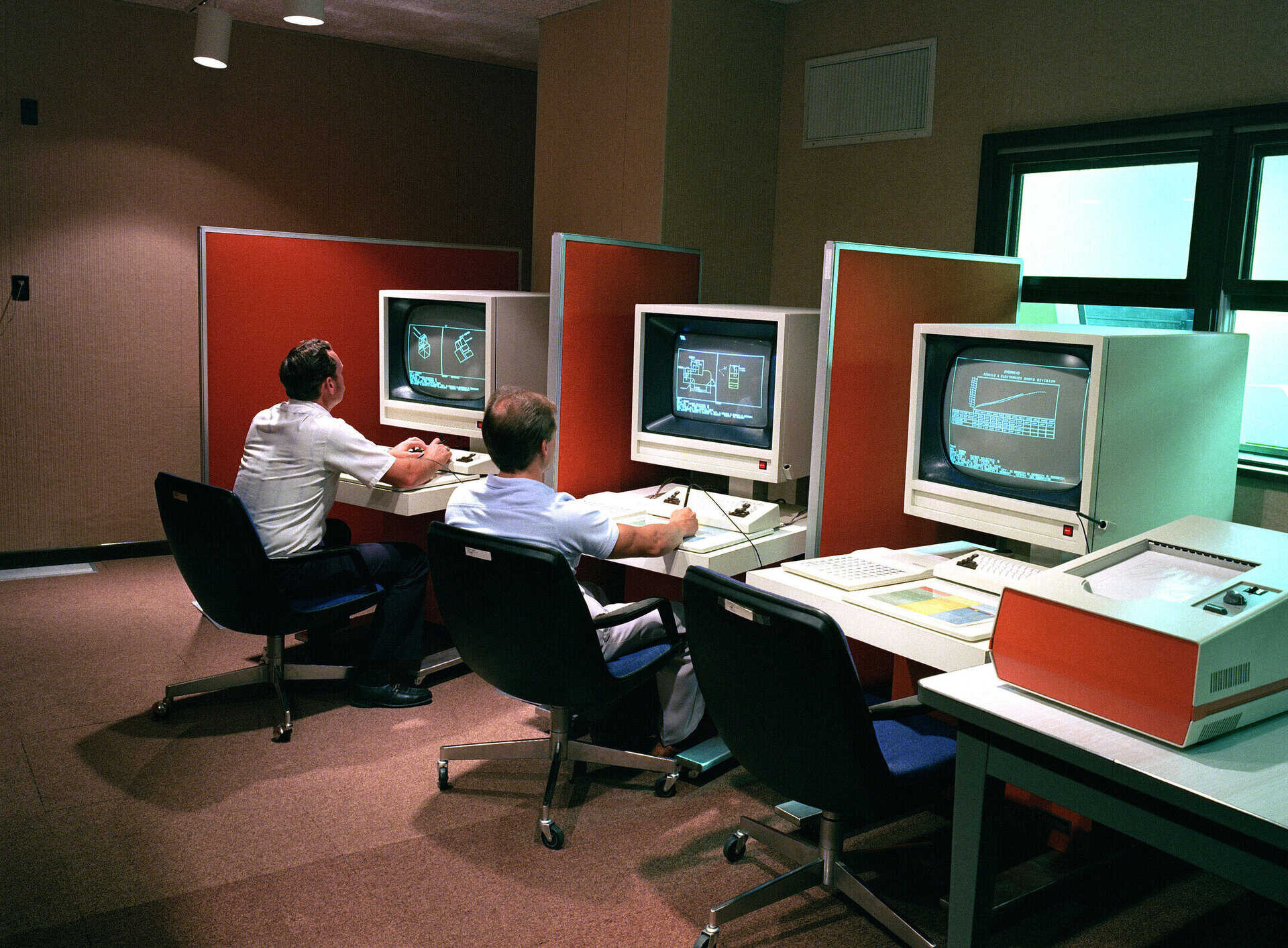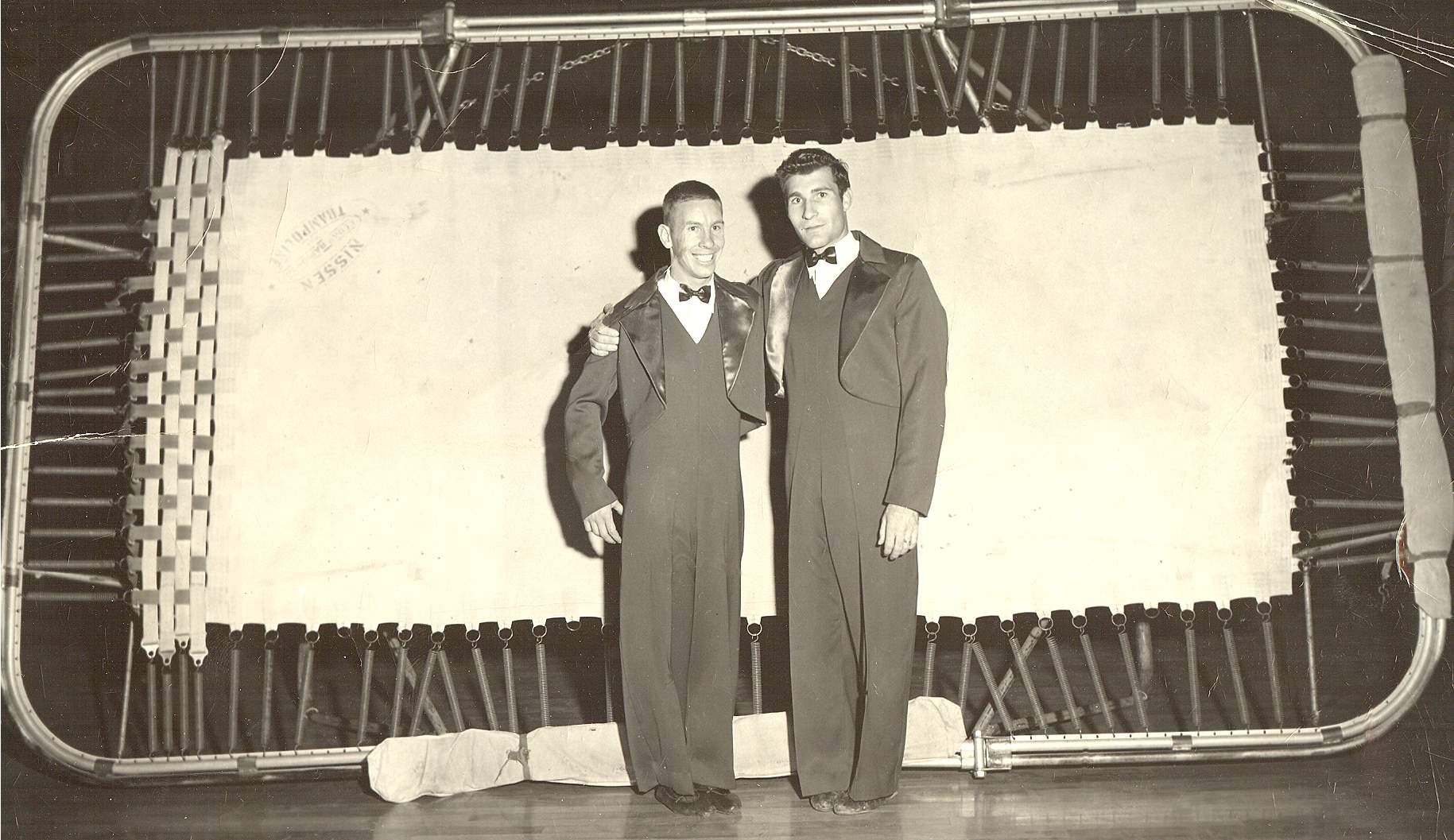

Furniture
Who Invented The Electric Lamp
Modified: March 24, 2024
Discover the fascinating history of the electric lamp, including its invention and the key inventors behind it. From early prototypes to modern furniture designs, explore the evolution of this essential household item.
(Many of the links in this article redirect to a specific reviewed product. Your purchase of these products through affiliate links helps to generate commission for Storables.com, at no extra cost. Learn more)
Introduction
Welcome to the fascinating world of electric lighting! From the flick of a switch to the glow of a bulb, we often take for granted the convenience and brilliance that electric lamps bring to our daily lives. But have you ever stopped to wonder about the origins of this incredible invention? Who were the brilliant minds that pioneered the concept of electric lighting?
In this article, we will embark on a journey through history to explore the individuals who played a vital role in the development of the electric lamp. From early attempts at electric lighting to the groundbreaking discoveries that paved the way for its modernization, we will delve into the fascinating stories of genius and innovation.
From the earliest days of human civilization, people have sought ways to illuminate their surroundings after the sun has set. Early civilizations used various methods such as oil lamps, candles, and gas lighting to achieve this purpose. However, it wasn’t until the 19th century that the concept of electric lighting began to take shape.
It is important to note that the invention of the electric lamp was not the work of a single individual, but rather the collective efforts of numerous scientists and inventors. Each one of them made significant contributions to the development of electric lighting, building upon the discoveries and inventions of their predecessors.
In the following sections, we will examine the early attempts at electric lighting, the contributions of prominent figures such as Sir Humphry Davy, Michael Faraday, Sir Joseph Swan, and Thomas Edison. By delving into their stories, we will gain a deeper understanding of the remarkable progress made in this field.
So, let us embark on this journey through time and uncover the fascinating history of the electric lamp, a true marvel of human ingenuity and innovation.
Key Takeaways:
- The development of the electric lamp was a collaborative effort, with pioneers like Sir Humphry Davy, Michael Faraday, Sir Joseph Swan, and Thomas Edison pushing the boundaries of science and technology to illuminate our world.
- From the creation of the electric arc lamp to the relentless pursuit of a commercially viable solution, the evolution of electric lighting has been fueled by the brilliance and ingenuity of countless inventors, shaping the way we live, work, and interact with our surroundings.
Read more: Who Invented The Fluorescent Lamp
Early Attempts at Electric Lighting
The quest for electric lighting dates back to ancient times, with early civilizations experimenting with various methods to achieve illumination. However, it wasn’t until the 18th and 19th centuries that significant progress was made in the field of electric lighting.
One of the early pioneers in this field was Sir Humphry Davy, a British chemist and inventor. In the early 1800s, Davy conducted experiments with electric arcs, which are created by passing an electric current through a gap between two conductive electrodes. By using carbon rods as electrodes, Davy was able to generate a powerful and bright light. Although his invention showed promise, it was not practical for widespread use due to its high cost and limited lifespan.
Another notable figure in early electric lighting was Michael Faraday. His revolutionary work in electromagnetism laid the foundation for future advancements in electric lighting. Faraday’s experiments with electromagnetic induction, conducted in the early 1830s, demonstrated the principles of generating electricity through the movement of a magnet inside a coil of wire. This discovery paved the way for the development of generators, the devices responsible for producing electrical power.
During this era, numerous inventors and scientists made important contributions to electric lighting. Sir Joseph Swan, an English physicist and chemist, successfully developed an incandescent lamp by conducting experiments with various materials as filament. In 1878, Swan introduced the first practical electric lamp, which utilized a carbonized paper filament enclosed in a partially evacuated glass bulb. Although Swan’s lamp was an important step forward, it still had limitations in terms of efficiency and lifespan.
It is important to mention that during this period, there were parallel developments happening across the Atlantic. Thomas Edison, the renowned American inventor, was also working tirelessly on creating a practical electric lamp. In the next section, we will delve deeper into Edison’s contributions and the pivotal role he played in the popularization of electric lighting.
Despite the challenges faced by early inventors, these early attempts at electric lighting laid the foundation for future breakthroughs. They opened the gateways of possibility and set the stage for the development of electric lamps that would transform the way we illuminate our world.
The Contributions of Sir Humphry Davy
Sir Humphry Davy, a British chemist and inventor, played a pivotal role in the early days of electric lighting. His groundbreaking experiments and inventions laid the foundation for future advancements in this field.
In the early 1800s, Davy conducted extensive research on the properties of electricity and developed the concept of the electric arc. The electric arc is created by passing an electric current through a gap between two conductive electrodes. By using carbon rods as electrodes, Davy was able to generate a bright and intense light.
His invention of the electric arc lamp, also known as the carbon arc lamp, revolutionized the possibilities of artificial lighting. The electric arc produced a light that was much brighter than any other existing lighting technology at the time.
One of the key applications of Davy’s electric arc lamp was in the field of lighthouses. Before its invention, lighthouses relied on inefficient and often unreliable methods of illumination, such as oil lamps or gas lamps. Davy’s electric arc lamp provided a much brighter and more reliable source of light, greatly improving visibility for ships at sea.
Although Davy’s electric arc lamp was a significant technological advancement, it was not without its limitations. The carbon electrodes used in the lamp burned quickly and required frequent replacement, making it impractical and expensive for widespread use.
Nevertheless, Davy’s work laid the groundwork for future developments in electric lighting. His inventions and discoveries inspired future scientists and inventors to continue exploring new possibilities and pushing the boundaries of technology.
Furthermore, Davy’s contributions extended beyond electric lighting. He made significant breakthroughs in the field of chemistry and is credited with the isolation and identification of several chemical elements, including sodium, potassium, calcium, and magnesium. Davy’s work in these areas earned him numerous accolades and led to his appointment as President of the Royal Society.
Sir Humphry Davy’s dedication to scientific exploration and his innovative experiments in electric lighting paved the way for future advancements in this field. His contributions to the understanding and harnessing of electricity continue to shape the modern world, making him a true pioneer in the realm of electric lighting.
The Importance of Michael Faraday’s Discoveries
Michael Faraday, often referred to as the father of electromagnetism, made groundbreaking discoveries that played a crucial role in the development of electric lighting and revolutionized our understanding of electricity.
In the early 1830s, Faraday conducted experiments on electromagnetic induction, a phenomenon that occurs when a changing magnetic field induces an electric current in a nearby conductor. These experiments laid the foundation for the development of generators, the devices that produce electrical power by converting mechanical energy into electrical energy.
Faraday’s work on electromagnetic induction was a milestone in the history of science, as it demonstrated the fundamental relationship between electricity and magnetism. His discoveries paved the way for the practical generation and harnessing of electricity, enabling numerous technological advancements including electric lighting.
Furthermore, Faraday’s experiments with electric currents and magnetic fields led to the development of the first electric motors. He demonstrated that an electric current passing through a conductor could generate rotational motion when placed in a magnetic field. This discovery laid the groundwork for the invention of electric motors, which are essential components in many modern devices, including electric lamps.
Additionally, Faraday’s research on the nature of light and the properties of electric arcs contributed to the development of more efficient electric lamps. He conducted experiments to improve the performance and lifespan of carbon arc lamps by introducing various modifications, such as enclosing the arc in a glass chamber filled with inert gas. These advancements laid the groundwork for the creation of more practical and durable electric lighting solutions.
Faraday’s impact extended beyond the field of electric lighting. His experiments and discoveries in electromagnetism influenced advancements in telecommunications, electrical power systems, and other areas of engineering and physics. His contributions to science earned him numerous accolades, including the prestigious Copley Medal awarded by the Royal Society.
Michael Faraday’s discoveries and experiments not only paved the way for the development of electric lighting but also revolutionized our understanding of electricity and magnetism. His groundbreaking work continues to shape the world we live in today and stands as a testament to the power of scientific inquiry and exploration.
The electric lamp was invented by Thomas Edison in 1879. He developed the first practical and long-lasting electric light bulb, which revolutionized the way we illuminate our world.
The Groundbreaking Work of Sir Joseph Swan
Sir Joseph Swan, an English physicist and chemist, made significant contributions to the development of electric lighting, particularly in the advancement of incandescent lamps.
In the late 1800s, Swan successfully developed an incandescent lamp, a significant breakthrough in electric lighting technology. Prior to Swan’s invention, electric lighting relied on the use of carbon arc lamps, which were limited in terms of efficiency and lifespan.
Swan’s incandescent lamp utilized a carbonized paper filament enclosed in a partially evacuated glass bulb. The filament, which glowed with incandescent light when an electric current passed through it, was the key innovation that made the lamp practical for everyday use.
One of Swan’s notable achievements was the improvement of the filament’s durability. By treating the carbonized paper with chemicals, Swan was able to significantly extend the lifespan of the filament, making his incandescent lamp a more reliable and long-lasting lighting solution.
In 1878, Swan demonstrated the first practical incandescent lamp, illuminating his home in Low Fell, England, using his newly developed electric lighting system. This milestone marked a significant leap forward in the field of electric lighting and made Swan a pioneer in the industry.
Swan’s incandescent lamp was commercially successful and gained widespread popularity. His company, Swan Electric Light Company, was one of the leading manufacturers of incandescent lamps in the late 19th century, supplying them for both domestic and industrial use.
In recognition of his contributions to electric lighting, Swan was awarded numerous honors, including membership in the Royal Society and the prestigious Edison Medal, named after his American counterpart, Thomas Edison.
It is important to note that while Swan was a key figure in the development of incandescent lamps, he was not alone in his endeavors. Thomas Edison, the renowned American inventor, was also working on similar technology. In fact, Edison and Swan collaborated on a patent sharing agreement, which allowed them to further refine and improve the incandescent lamp.
Sir Joseph Swan’s groundbreaking work in the development of incandescent lamps opened up new possibilities for electric lighting. His contributions in improving the durability and practicality of the incandescent lamp laid the foundation for the widespread adoption of electric lighting systems that would eventually transform the way we illuminate our world.
Read more: Who Invented The Electric Motor
The Role of Thomas Edison in the Development of the Electric Lamp
When it comes to the development of the electric lamp, no name is more synonymous with innovation and success than that of Thomas Edison, the American inventor and entrepreneur.
Edison’s work on electric lighting began in the late 1870s, when he embarked on a mission to create a practical and commercially viable incandescent lamp. His goal was to develop a lamp that would be more efficient, longer-lasting, and affordable for widespread use.
Edison conducted thousands of experiments in his laboratory, exploring various materials and designs for the incandescent lamp filament. After extensive research, he discovered that a carbonized bamboo filament could produce a bright and long-lasting light when an electric current passed through it.
In 1879, Edison successfully demonstrated his incandescent lamp by illuminating Menlo Park, New Jersey, with electric lights. This event marked a turning point in the history of electric lighting and brought Edison international fame.
While Edison is often credited as the sole inventor of the incandescent lamp, it is important to recognize the collaborative efforts that took place during that time. As mentioned earlier, Thomas Edison and Sir Joseph Swan, a British inventor, collaborated on the development of the incandescent lamp. They shared their patents and worked together to improve the design and efficiency of the lamp.
Edison’s contributions extended beyond the incandescent lamp itself. He also played a significant role in developing the infrastructure required for electric lighting. In order to ensure the practical implementation of electric lighting systems, Edison had to tackle other challenges, including the development of electrical distribution systems and the creation of power stations.
Furthermore, Edison’s entrepreneurial spirit led to the establishment of the Edison Electric Light Company, which focused on the manufacturing and distribution of incandescent lamps. This company would later develop into General Electric, one of the leading electric lighting companies in the world.
Edison’s impact on the field of electric lighting cannot be overstated. His determination, relentless experimentation, and business acumen were instrumental in bringing electric lighting technology to the masses. His contributions laid the foundation for the modern electric lighting systems that we rely on today.
Thomas Edison’s name is forever etched in the annals of history as the driving force behind the development of the electric lamp. His relentless pursuit of innovation and his passion for progress have left an indelible mark on the world of technology and illumination.
Conclusion
The journey through the history of the electric lamp has been nothing short of captivating. From the early attempts at electric lighting to the groundbreaking discoveries of Sir Humphry Davy and Michael Faraday, and the contributions of Sir Joseph Swan and Thomas Edison, we have witnessed the evolution of a technology that has revolutionized the way we illuminate our world.
Electric lighting has come a long way from the flickering flames of ancient oil lamps to the brilliant glow of modern LED bulbs. Each step along this path has been fueled by the brilliance and ingenuity of countless inventors and scientists who saw the potential in harnessing the power of electricity.
Sir Humphry Davy’s creation of the electric arc lamp set the stage for future advancements, while Michael Faraday’s discoveries in electromagnetism opened a doorway to generating and harnessing electricity. Sir Joseph Swan’s practical incandescent lamp and Thomas Edison’s relentless pursuit of a commercially viable solution brought electric lighting into the homes and streets, changing the course of human history.
It is important to recognize that the development of the electric lamp was not the work of a single individual. It was a collaborative effort, with each inventor building upon the progress made by their predecessors. Collectively, they pushed the boundaries of science and technology, transforming the way we live, work, and interact with our surroundings.
Today, electric lighting has become an integral part of our lives, illuminating our homes, offices, streets, and beyond. It offers convenience, safety, and comfort, allowing us to navigate our world even when the sun has set.
As we reflect on the remarkable journey of the electric lamp, let us not forget the tireless curiosity, innovation, and perseverance of those who made it possible. Their contributions have illuminated our lives and continue to guide us towards a brighter and more sustainable future.
So the next time you flip a switch or change a light bulb, take a moment to appreciate the rich history and the extraordinary minds that have shaped the incredible technology that fills our world with light.
Frequently Asked Questions about Who Invented The Electric Lamp
Was this page helpful?
At Storables.com, we guarantee accurate and reliable information. Our content, validated by Expert Board Contributors, is crafted following stringent Editorial Policies. We're committed to providing you with well-researched, expert-backed insights for all your informational needs.














